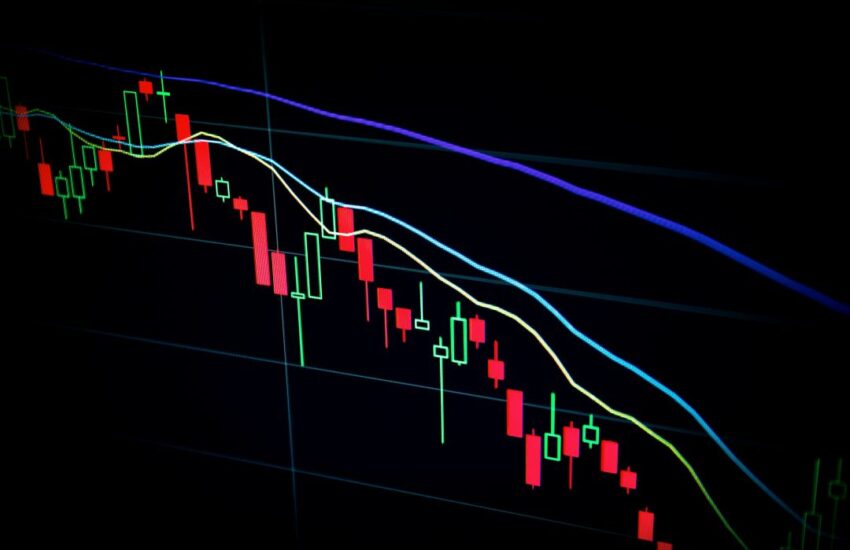Simple Guide About Forex Trading 2025
Table of Contents
When you start learning about forex trading it can feel inviting, especially with the size of the request. With over 7 trillion USD traded every day by all types of request actors, there’s a lot of profit eventuality but also risks to consider.
For newcomers looking to get started, it’s important to know that forex trading is n’t just about buying and dealing currencies without end or reason. numerous factors like global husbandry, political events and request mood play a big part in how currency dyads move and this can affect trading strategies.
In this companion we’ll break it down to help you get a solid first grasp of forex trading. You’ll learn the basics, explore the different types of requests and follow a simple plan to get started.
What’s forex trading?
Forex trading or foreign exchange trading is the process of buying and dealing currencies on the global request.
This happens in dyads, similar as EUR/ USD where euros are traded against US bones . The value of these currencies fluctuates grounded on interest rates, profitable data and geopolitical events.
crucial points to know about forex trading
request hours. The forex request operates 24 hours a day, 5 days a week, starting with the Asian requests on Monday and closing after the New York session on Friday.
Trading volume. It’s the largest fiscal request encyclopedically, with a diurnal trading volume of over$ 7 trillion, offering high liquidity and fast deals.
Common currencies. The most traded currencies are the US bone ( USD), Euro( EUR), Japanese yearning( JPY) and British pound( GBP) which are part of the major currency dyads.
Forex trading serves a many purposes
Profit. Dealers aim to make plutocrat from price movements by buying low and dealing high or dealing high and buying low.
Hedging. Businesses use forex to cover against unfavourable currency shifts, stabilise costs and reduce fiscal uncertainty.While forex trading offers openings, it also comes with big pitfalls. The request is big and global so prices can change presto, told by profitable pointers, policy opinions and unanticipated events. A solid understanding of these factors is crucial to anyone looking to trade forex successfully.
Types of forex requests
Understanding the different types of forex requests is important for any freshman. Then’s a brief overview of some terms you may encounter when trading currencies
1. Spot request
The spot request is the utmost introductory and common type of forex trading. Then currencies are bought and vended for immediate delivery grounded on the current request price. Deals are presto, generally settled within 2 business days, that’s why it’s a favourite among dealers who succeed
2. Forward request
In the forward request, dealers agree to buy or vend currencies at a future date for a price agreed upon moment. This type of request is generally used for hedging against unborn price oscillations. Contracts in the forward request are customised between parties, allowing businesses to manage currency threat effectively.
3. Futures request
The futures request is analogous to the forward request but with standardised contracts that are traded on regulated exchanges.
4. Options request
The options request allows dealers the right, but not the obligation, to buy or vend currencies at a specific price before a certain date. This request provides inflexibility and is frequently used by more educated dealers to manage implicit pitfalls while keeping their options open.
These are the crucial types of forex requests you will encounter. Each serves different purposes, but as a freshman, it’s wise to concentrate on the spot request first.
How important do you need to start forex trading?
For newcomers, the quantum you need to start forex trading varies grounded on your pretensions, threat forbearance, and the broker you choose. numerous brokers have minimal deposit conditions, frequently ranging from USD 50 to several hundred bones . Starting with a lower quantum can be wise, especially while you are still learning the ropes.
influence is another factor to consider since it allows you to control larger positions with lower capital. For case, with 501 influence, a USD 1,000 investment could control USD 50,000 in currency. still, influence also increases threat, and it’s better to avoid it as a freshman.
Micro accounts, which allow you to start trading with as little as USD 100, are ideal for newcomers. Keep in mind the fresh costs like spreads, commissions, and exchange freights for holding positions overnight, as these can affect your overall trading budget.
introductory forex trading strategies for newcomers
Then are some introductory strategies that can help you as a freshman
Trend trading
This is one of the simplest and most popular strategies, especially for newcomers. It involves relating the direction of the request and trading in that direction. Dealers look for upward( bullish) or over( bearish) trends and open positions that align with the trend.
For illustration, if the EUR/ USD is constantly moving overhead, a trend dealer would buy, anticipating farther upward movement.
Range trading
In range trading, a dealer identifies price situations where a currency brace constantly moves between a high and a low point — called support and resistance situations. The thing is to buy at the support position( the smallest price) and vend at the resistance position( the loftiest price). This strategy works best in stable requests without significant price flights.
Rout trading
rout trading focuses on entering the request when a currency brace breaks out of a predefined range or pattern, similar as a triangle or vertical channel. The idea is to catch the launch of a new trend beforehand. This strategy requires good timing and can be largely profitable, but it also carries a advanced threat if the rout is a false signal.
Scalping
Scalping is a short- term strategy where dealers aim to benefit from small price changes within a short period. Positions are held for twinkles or indeed seconds. Due to the high frequence of trades, scalping can be violent and requires a lot of attention. It’s recommended for newcomers to start laggardly before trying this system.
Swing trading
Swing trading falls nearly between day trading and long- term investing. Positions are held for a many days to weeks, allowing dealers to take advantage of medium- term price movements. This strategy combines both specialized and abecedarian analysis to identify implicit swings in the request.
Position trading
This is a long-term strategy in which dealers hold positions for weeks, months, or even years. Position dealers concentrate on long-term trends and generally avoid day-to-day request oscillations. This system requires tolerance and a deep understanding of request fundamentals, making it more suitable for newcomers with a long-term focus.
Conclusion Starting forex trading on the right bottom
Jumping into forex trading can be instigative, especially with all the possibilities it offers. For newcomers, it’s important to learn the basics, similar as the different requests, the most traded dyads, and getting to know some of the simpler trading strategies.
Starting small is a smart move or starting trading on rally – without risking any real plutocrat. Once you have erected up some experience and feel more confident, you can figure out how to do and decide what your long- term pretensions are. No matter which stage of the trip you’re in, it’s essential to keep learning as you go, and not forget that tolerance and discipline are a major part of forex trading.



